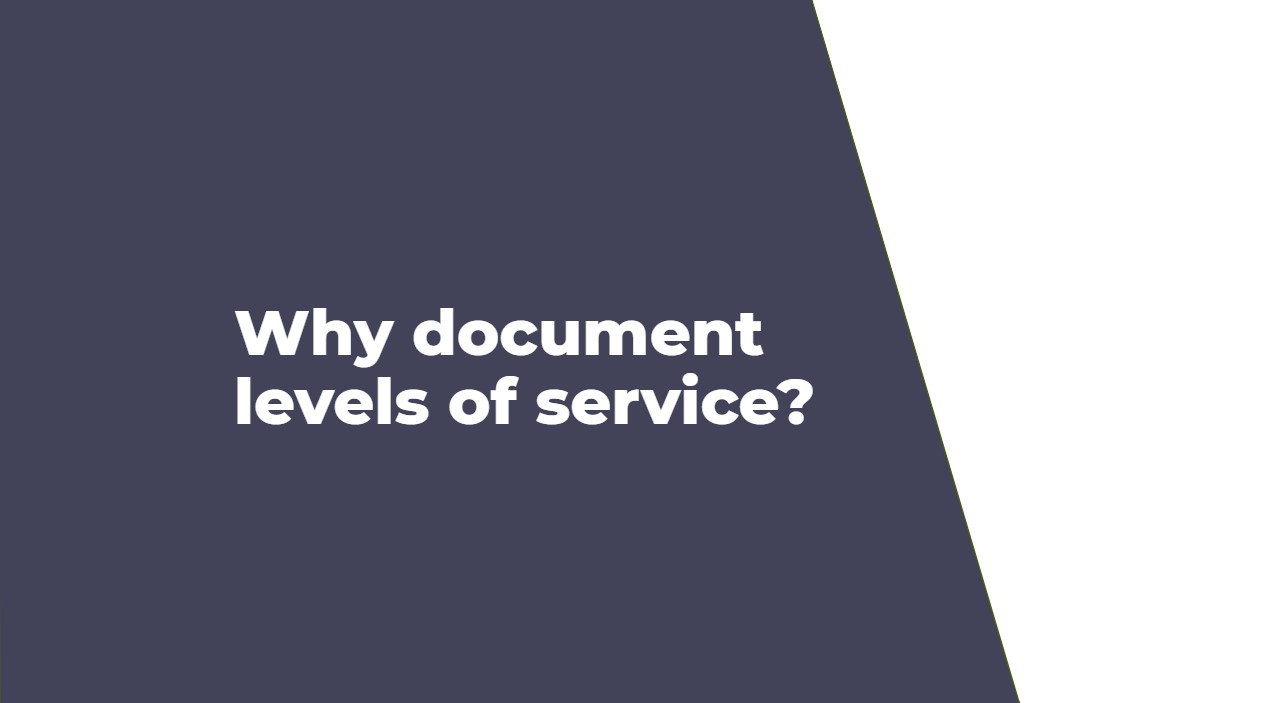
Levels of service (LOS) are specific parameters that describe and measure the extent and quality of services provided by local governments to stakeholders. Successfully defining LOS is achieved through considering a blend of infrastructure, resources and capacity. Common infrastructure for which LOS are usually set include roads, bridges, drinking water and sanitation services.
The process of documenting LOS encourages municipalities to seek innovative ways to reduce the whole life cost of service delivery. To get started on or to continue your work to document LOS for your municipality, you are invited to access the resources below, which include:
- A presentation that you can customize to raise awareness of the importance of LOS
- A step-by-step infographic that helps you visualize the process of documenting LOS
- Resources and real-world case studies so you can learn how other municipalities are addressing LOS challenges
Presentation: Using LOS as a crucial accountability tool
Use this customizable presentation to brief elected officials or other interested parties on the importance of documenting LOS. The presentation also describes how documenting LOS can improve decision-making and advance your municipality’s asset management journey. Designed especially for municipalities that are new to developing LOS, it demystifies the process by outlining questions to be considered and highlighting the benefits.
Step-by-step infographic: How to document LOS and pathways to action
To begin documenting LOS, your municipality must clearly identify its strategic objectives and the community’s needs. Once these are identified and communicated, your municipality is ready to embark on the following phases:
- Identify services and assets
- Describe current levels of service and identify performance measures
- Prepare an action plan
- Measurement and reporting
Key cross-cutting themes that should be embedded throughout the process include climate change; Reconciliation and anti-racism, equity and inclusion; and public consultation. In addition, it is important to recognize the association between LOS and risk processes and how increasing risk can also impact service levels.
Explore practical examples: Case studies, workshops, and tools
Below you’ll find select case studies, tools and other resources, including information about hands-on workshops, that share tips and strategies to help you move ahead with your LOS learning and processes.
Municipal LOS case studies
- Significant progress in setting LOS in Flagstaff County, AB
- Advancing municipal processes in Conception Bay South, NL
Tools and resources
- Learning journey: Climate resilience and asset management
- Resources to integrate climate resilience into asset management, including LOS and risk assessment
- Northwest Territories Association of Communities’ (NWTAC) levels of service toolkit
- A customizable template and guide to help northern municipalities begin the LOS process
- Atlantic Infrastructure Management (AIM) Network’s Level of service assessment tool
- A customizable template to document locally applicable customer LOS statements
- Asset Management BC’s (AMBC) levels of service tool
- A customizable tool that includes examples of LOS statements for common asset types — can be used as a ready-made resource or adjusted to suit specific needs
- The Federation of Canadian Municipalities' asset management resource library
- Tools, guides and more related to a variety of asset management focus areas, including LOS

This resource was developed by the Municipal Asset Management Program(MAMP)
MAMP was designed to help Canadian municipalities strengthen their infrastructure investment decisions based on reliable data and sound asset management practices. This eight-year, $110-million program was funded by the Government of Canada and delivered by the Federation of Canadian Municipalities. It was implemented in partnership with municipal, provincial and territorial associations and other key stakeholders.


